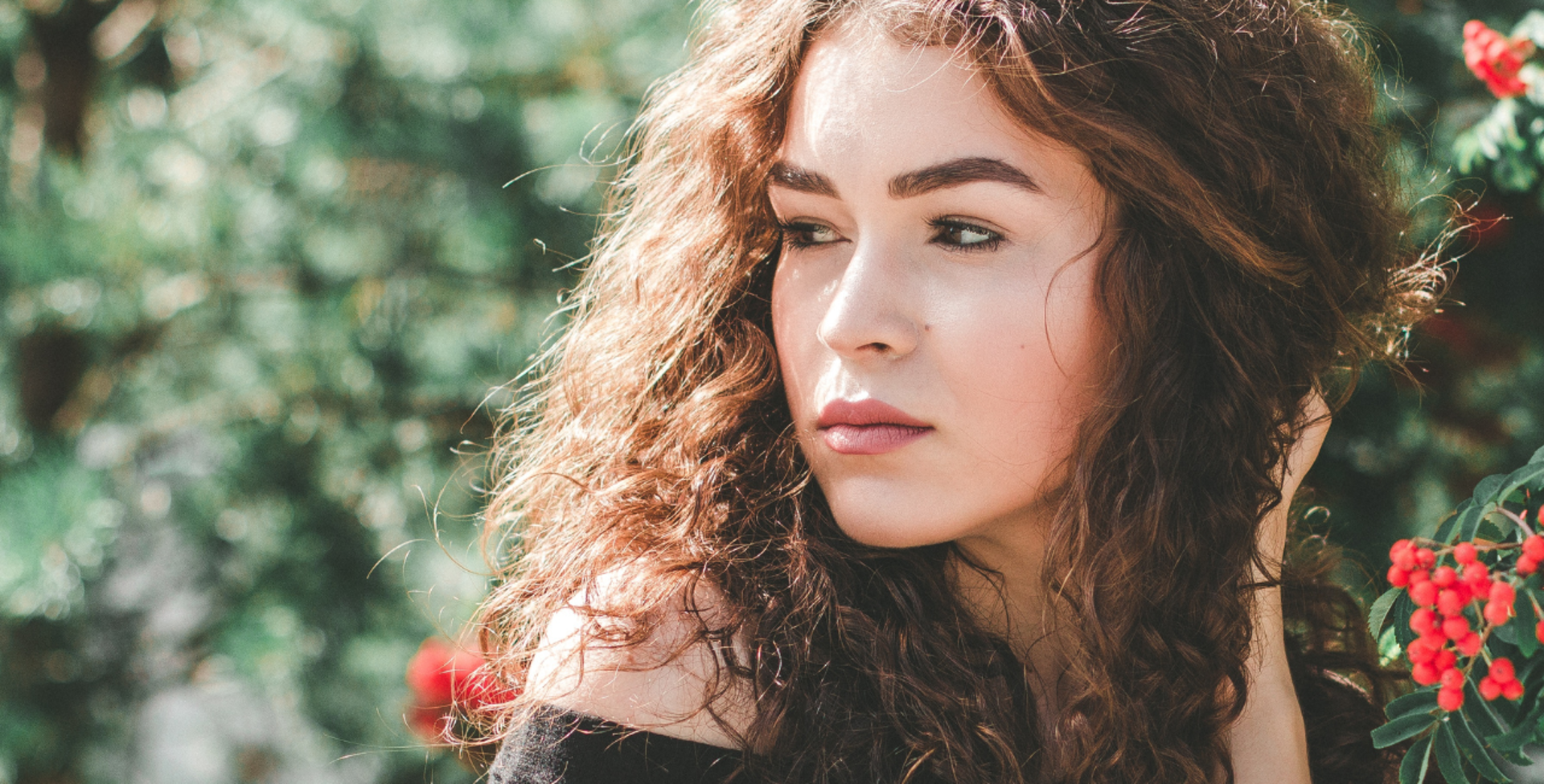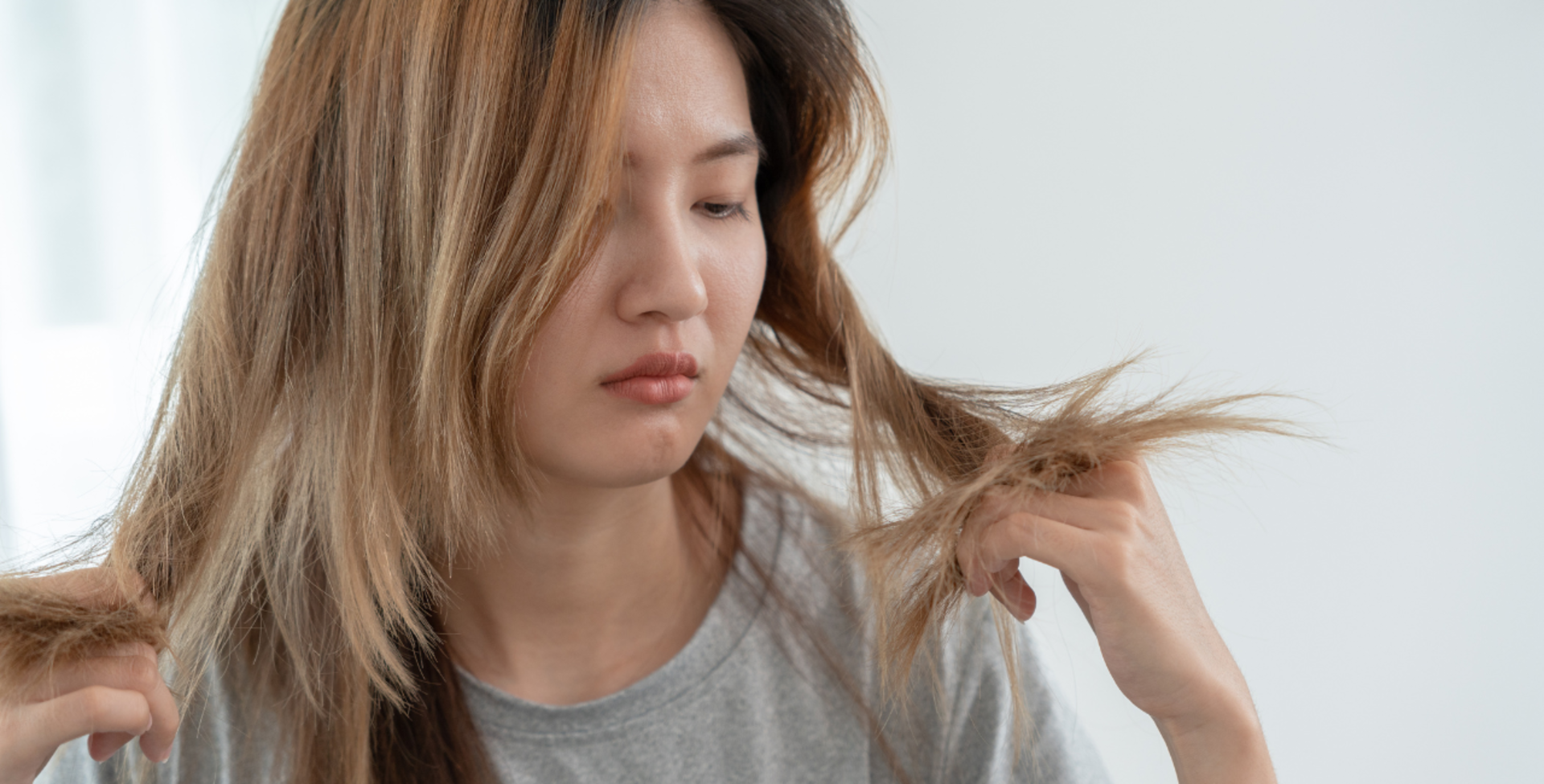FREE NZ DELIVERY FOR ORDERS OVER $75
TAKE OUR QUIZ
WHAT'S MY
hair type?

Why Knowing Your Hair Type Matters
Not all hair is created equal, and neither is haircare! By understanding your hair type, you’ll be able to pick products that truly work for you, treat your unique concerns, and help your locks thrive.
Take our easy quiz to find your hair type and discover tailored tips to keep your locks looking their best. Let’s find your perfect match!
How Our Quiz Works
For each question, select the letter (A, B, C, or D) that best matches your hair’s characteristics and concerns. Write down or keep a mental tally of your answers as you go – it’s quick and easy!
Once you’ve answered all the questions, tally up your responses. The letter you chose the most will reveal your hair type. Don’t worry if you have a mix of answers – we’ll guide you to the best tips for your unique needs!
Start the Quiz!
1. What’s your natural hair texture like?
A. Fine and straight
B. Medium and wavy
C. Thick and curly/coily
D. Coarse and textured
2. How does your scalp feel after a day or two without washing?
A. Oily and prone to greasiness.
B. Balanced, sometimes itchy.
C. Dry and flaky.
D. Normal or slightly dry.
3. How does your hair feel after washing?
A. Clean and light but gets oily quickly.
B. Soft but sometimes frizzy.
C. Moisture-hungry and a little tangled.
D. Dry and thick.
4. How often do you wash your hair?
A. Every day
B. Every 2–3 days
C. Once or twice a week
D. It varies depending on how my hair feels
5. Is your hair colour-treated, chemically-treated, or natural?
A. Natural
B. Blonde or lightened
C. Chemically straightened/relaxed
D. Coloured or bleached
6. How does your hair behave in humid weather?
A. Looks flat and lifeless.
B. Frizzes up almost immediately.
C. Becomes even harder to manage.
D. Feels rough and unmanageable.
7. What is the length of your hair?
A. Short or cropped
B. Shoulder-length
C. Long and flowing
D. Mid-length but thick and heavy
8. What’s your typical styling routine?
A. Wash-and-go, no heat styling
B. I style occasionally but air-dry often
C. Regular heat styling with a straightener/curling iron
D. Frequent blow-drying or hot tool use
9. What’s your biggest hair concern?
A. Oiliness and limp strands.
B. Frizz and lack of definition.
C. Dryness and breakage.
D. Damage from colouring or heat styling.
Next Step:
Tally up your answers to see which letter you picked most often! This will guide you to your hair type category and help you unlock expert tips to care for your locks.
Your Hair Type is...
If You Answered Mostly A’s: Fine & Oily Hair
What it means:
You’ve got fine hair that tends to get oily quickly. While lightweight and manageable, your hair may struggle with volume and can feel limp or greasy at the roots after just a day.

How to care for it:
- Use a volumising shampoo to add body without weighing your hair down.
- Avoid heavy conditioners; instead, opt for lightweight, oil-free formulas applied only to the mid-lengths and ends.
- Extend the time between washes with a dry shampoo to keep grease at bay without over-washing.
Recommended Products
![Tricho Scalp Control Cleanser [500ml]](https://static.holygrailhaircare.co.nz/img/products/sm/dl2142.jpg)
![Tricho Scalp Control Conditioner [500ml]](https://static.holygrailhaircare.co.nz/img/products/sm/dl2143.jpg)
If You Answered Mostly B’s: Wavy & Frizzy Hair
What it means:
Your hair is naturally wavy, which can make it prone to frizz and a lack of definition. It’s often soft but needs extra care to stay smooth and manageable.

How to care for it:
- Incorporate a smoothing shampoo and conditioner to tame frizz while enhancing your natural wave pattern.
- Use a leave-in conditioner or curl cream for extra hydration and definition.
- Avoid brushing your hair when it’s dry - this will amplify frizz! Instead, use a wide-tooth comb on damp hair.
Pro Tip: Protect your hair from heat and humidity with a lightweight anti-frizz serum or spray.
Recommended Products
![SO Magic Smoothing Shampoo [300ml]](https://static.holygrailhaircare.co.nz/img/products/sm/sbl84003.jpg)
![SO Magic Smoothing Conditioner [300ml]](https://static.holygrailhaircare.co.nz/img/products/sm/sbl84004.jpg)
![SO Magic 28 in 1 Styling Treatment [200ml]](https://static.holygrailhaircare.co.nz/img/products/sm/sbl84070.jpg)
![Davroe Smooth Anti-Frizz Shampoo [325ml]](https://static.holygrailhaircare.co.nz/img/products/sm/d3531.jpg)
![Davroe Smooth Anti-Frizz Conditioner [325ml]](https://static.holygrailhaircare.co.nz/img/products/sm/d3533.jpg)
If You Answered Mostly C’s: Curly & Dry Hair
What it means:
You’ve got curls! While your hair is full of personality, it can also be prone to dryness, breakage, and tangling. Your strands often need extra hydration to stay soft and defined.

How to care for it:
- Focus on moisture-rich shampoos and conditioners designed for curly hair.
- Use a deep conditioning treatment once a week to hydrate and detangle.
- Enhance your curls with a defining cream or gel, and always scrunch out excess water with a microfibre towel or T-shirt.
Pro Tip: Avoid sulphates and harsh cleansers to prevent stripping your natural oils, which are vital for healthy curls.
Recommended Products
![Matrix A Curl Can Dream Shampoo [1Ltr]](https://static.holygrailhaircare.co.nz/img/products/sm/matunz05377.jpg)
![Matrix A Curl Can Dream Rich Mask [1Ltr]](https://static.holygrailhaircare.co.nz/img/products/sm/matunz05378.jpg)
![Wella Nutricurls Micellar Shampoo For Curls [250ml]](https://static.holygrailhaircare.co.nz/img/products/sm/wel99240035250.jpg)
![Wella Nutricurls Detangling Conditioner [200ml]](https://static.holygrailhaircare.co.nz/img/products/sm/wel99240060947.jpg)
![Wella Nutricurls Cleansing Conditioner [250ml]](https://static.holygrailhaircare.co.nz/img/products/sm/wel99240060996.jpg)
![Davroe CURLiCUE Cleansing Clay Shampoo [300ml]](https://static.holygrailhaircare.co.nz/img/products/sm/3472.jpg)
![Davroe CURLiCUE Deep Conditioning Rinse [300ml]](https://static.holygrailhaircare.co.nz/img/products/sm/3475.jpg)
If You Answered Mostly D’s: Coarse, Textured, or Damaged Hair
What it means:
Your hair is thick, coarse, or has been through a lot - whether from colouring, heat styling, or chemical treatments. While strong, it can feel rough, dry, or difficult to manage.

How to care for it:
- Use a repairing shampoo and conditioner to rebuild and strengthen your strands.
- Add a weekly hair mask or oil treatment to deeply nourish and smooth your hair.
- Reduce heat styling and always use a heat protectant if you can’t skip the tools.
Pro Tip: Seek out products with keratin, argan oil, or hyaluronic acid to restore softness and shine.
Recommended Products
![Matrix Food For Soft Hydrating Shampoo [1Ltr]](https://static.holygrailhaircare.co.nz/img/products/sm/mate4013600.jpg)
![Matrix Food For Soft Hydrating Conditioner [1Ltr]](https://static.holygrailhaircare.co.nz/img/products/sm/mate4013700.jpg)
![Joico Moisture Recovery Shampoo [300ml]](https://static.holygrailhaircare.co.nz/img/products/sm/sab126536.jpg)
![Joico Moisture Recovery Conditioner [250ml]](https://static.holygrailhaircare.co.nz/img/products/sm/sab152561.jpg)
![Joico Moisture Recovery Treatment Balm [250ml]](https://static.holygrailhaircare.co.nz/img/products/sm/sab126765.jpg)
![Wella Ultimate Repair Deep Conditioner [200ml]](https://static.holygrailhaircare.co.nz/img/products/sm/99350167817.jpg)
![Wella Ultimate Repair Shampoo [250ml]](https://static.holygrailhaircare.co.nz/img/products/sm/99350167804.jpg)
Got Other Hair Concerns?
No worries – we’ve got you covered! Whether you’re dealing with thinning hair, embracing your natural grey, or maintaining your fabulous colour, here are some extra tips to help you care for your hair and keep it looking its best.
Thinning Hair
What it means:
Thinning hair can be caused by genetics, stress, age, or hormonal changes. If you notice less volume, visible scalp areas, or increased hair shedding, your hair likely needs extra care to support scalp health and hair density.
How to care for it:
- A healthy scalp is key to promoting hair growth. Use shampoos designed to remove buildup and nourish follicles.
- Opt for lightweight volumising products to lift your roots without weighing your hair down.
- Skip over-processing or harsh chemicals that could weaken your hair further.
- Scalp serums and leave-in treatments can stimulate the scalp and strengthen thinning areas over time.
Pro Tip: Look for products containing niacinamide, caffeine, or keratin to support scalp circulation and hair resilience.
Recommended Products
![Nioxin System #1 Scalp+Hair Shampoo [300ml]](https://static.holygrailhaircare.co.nz/img/products/sm/99350180129.jpg)
![Nioxin System #1 Scalp+Hair Conditioner [300ml]](https://static.holygrailhaircare.co.nz/img/products/sm/99350180122.jpg)
![Nioxin System #1 Thickening Treatment [100ml]](https://static.holygrailhaircare.co.nz/img/products/sm/99350180134.jpg)
![Nioxin System #2 Scalp+Hair Shampoo [300ml]](https://static.holygrailhaircare.co.nz/img/products/sm/99350179977.jpg)
![Nioxin System #2 Scalp+Hair Conditioner [300ml]](https://static.holygrailhaircare.co.nz/img/products/sm/99350180118.jpg)
![Nioxin System #2 Thickening Treatment [100ml]](https://static.holygrailhaircare.co.nz/img/products/sm/99350179974.jpg)
![Nioxin Diaboost Hair Thickening Serum [100ml]](https://static.holygrailhaircare.co.nz/img/products/sm/99350179946.jpg)
![Nioxin Hair Booster Serum [100ml]](https://static.holygrailhaircare.co.nz/img/products/sm/99350180140.jpg)
![Nioxin Hair Fall Defence Serum [70ml]](https://static.holygrailhaircare.co.nz/img/products/sm/99350182438.jpg)
Grey Hair
What it means:
Grey hair is often coarser and drier due to the natural decline in melanin and oil production. It may also be prone to yellowing or dullness from environmental factors like pollution and UV exposure.
How to care for it:
- Use nourishing shampoos and conditioners to soften grey hair and prevent brittleness.
- Use a silver or purple shampoo weekly to keep your grey hair vibrant and bright.
- Apply heat protectants before styling and UV-protectant sprays to guard against sun exposure.
- Look for lightweight oils or shine-enhancing products to restore your hair’s natural glow.
Pro Tip: Avoid heavy silicones that can weigh down grey hair - opt for products with natural oils or light-reflecting ingredients instead.
Recommended Products
![RPR Brighten My Blonde Shampoo [1Ltr]](https://static.holygrailhaircare.co.nz/img/products/sm/rpr7035.jpg)
![RPR Brighten My Blonde Conditioner [1Ltr]](https://static.holygrailhaircare.co.nz/img/products/sm/rpr7036.jpg)
![Joico Blonde Life Violet Shampoo [300ml]](https://static.holygrailhaircare.co.nz/img/products/sm/sab16236.jpg)
![Joico Blonde Life Violet Conditioner [250ml]](https://static.holygrailhaircare.co.nz/img/products/sm/sab16237.jpg)
![Moroccanoil Blonde Perfecting Purple Shampoo [200ml]](https://static.holygrailhaircare.co.nz/img/products/sm/hcm41701.jpg)
![Moroccanoil Blonde Perfecting Purple Conditioner [200ml]](https://static.holygrailhaircare.co.nz/img/products/sm/hcm41704.jpg)
Coloured Hair
What it means:
Coloured hair, whether bleached or dyed, requires special care to maintain its vibrancy and health. Chemicals can weaken the hair’s structure, making it prone to dryness, dullness, and damage.
How to care for it:
- Use shampoos and conditioners specifically formulated for colour-treated hair to prevent fading and brassiness.
- Treat your hair with moisturising masks or treatments weekly to combat dryness.
- Wash your hair less frequently and with lukewarm water to avoid stripping colour.
- For blonde or lighter shades, incorporate purple or blue shampoos to neutralize brassiness and keep your colour fresh.
Pro Tip: Use sulphate-free products to gently cleanse your hair without stripping away your colour or natural oils.
Recommended Products
![Joico Colorful Anti-Fade Conditioner [250ml]](https://static.holygrailhaircare.co.nz/img/products/sm/sab2631707.jpg)
![Wella Color Motion Moisturising Conditioner [200ml]](https://static.holygrailhaircare.co.nz/img/products/sm/wel99240015884.jpg)
![Wella Color Motion Protection Shampoo [250ml]](https://static.holygrailhaircare.co.nz/img/products/sm/wel99350103816.jpg)
![Wella Color Motion Structure Mask [150ml]](https://static.holygrailhaircare.co.nz/img/products/sm/wel99240015902.jpg)





